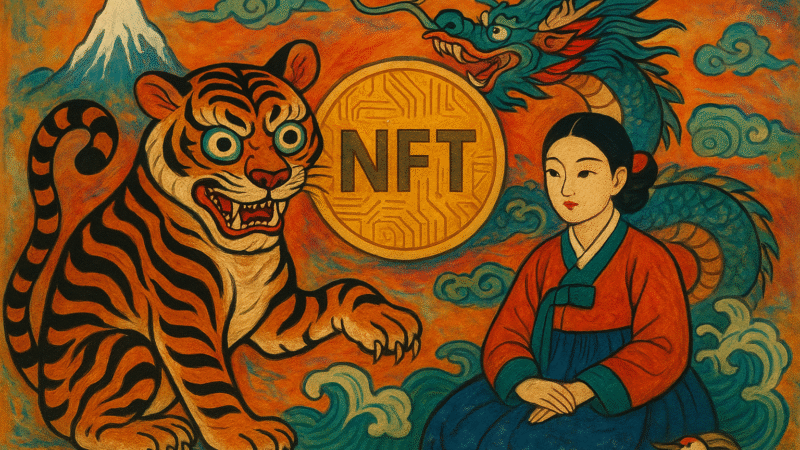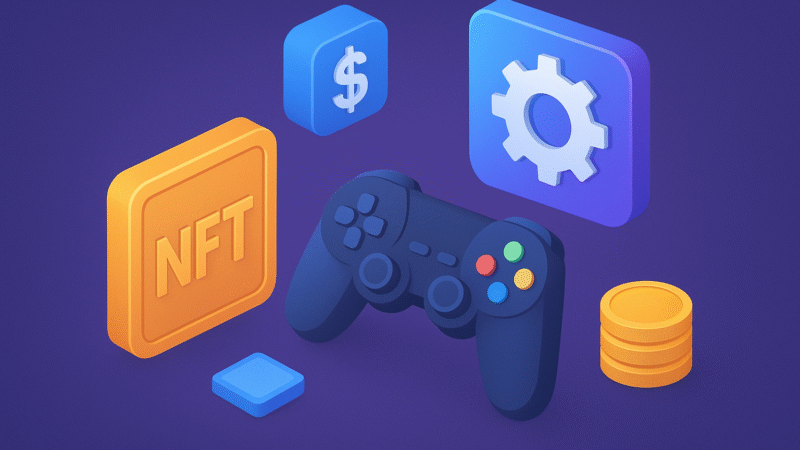Base Emerges As A Leading Player In NFT Trading
Introduction
In the constantly shifting landscape of blockchain technology and digital collectibles, a new player has captured the industry’s attention. Coinbase’s layer-two network, Base, has recently secured the third spot in global NFT trading volume, overtaking established competitors such as Solana and Immutable zkEVM. Within just thirty days, Base recorded a seventy percent jump in NFT volume, reaching nearly forty eight million dollars. This rapid ascent signals not only the platform’s growing strength but also the shifting preferences of traders and collectors who are seeking alternatives to traditional NFT hubs.
The rise of Base highlights a pivotal moment for the NFT market. While Ethereum continues to dominate as the primary chain for high-value collections and Polygon has carved out a strong position with real-world asset tokenization, Base is demonstrating how speed, low costs, and seamless integration with mainstream platforms can accelerate adoption. Its ability to move from a newcomer to a top-three player in such a short time underscores the hunger in the market for innovation and accessibility.
The Driving Force Behind Base’s Momentum
The Power of Layer-Two Infrastructure
Base is built as a layer-two solution on top of Ethereum. This means it leverages Ethereum’s robust security while providing enhanced scalability and reduced costs. For years, one of the major barriers to NFT adoption on Ethereum was its high transaction fees, which often spiked to fifty or even one hundred dollars during times of network congestion. By contrast, Base processes transactions for only a fraction of that cost. After Ethereum’s Dencun upgrade introduced EIP-4844, Base’s transaction fees dropped even further, averaging less than ten cents. This dramatic reduction makes NFT buying, selling, and minting accessible to a much wider audience, especially retail users who were previously priced out of participation.
Coinbase Integration as a Growth Catalyst
Perhaps the most unique advantage of Base is its direct integration with Coinbase. Coinbase remains one of the most widely used and trusted cryptocurrency exchanges globally, with over one hundred million registered users. By building Base within its ecosystem, Coinbase has effectively created a seamless bridge between Web2 and Web3. Users can transition from fiat purchases to digital assets without the usual technical complexity of managing wallets and gas fees. With features like gasless onboarding and the Coinbase Smart Wallet, new participants can join the NFT space without friction. This ecosystem integration amplifies Base’s reach far beyond what a typical blockchain project can achieve independently.
Popular NFT Collections on Base
Another key element of Base’s rise has been the popularity of specific collections. Projects such as Get Based, DX Terminal, and Based Style have generated over twenty five million dollars in trading activity within the past month alone. These collections have captured community enthusiasm, offering cultural resonance and speculative value that fuels liquidity. Their success demonstrates that Base is not merely benefitting from lower costs but is also fostering creative ecosystems that attract both developers and collectors.
Comparison With Other Chains
Ethereum’s Continued Dominance
Despite Base’s explosive growth, Ethereum remains the undisputed leader in NFT markets. In the same thirty-day window, Ethereum recorded over four hundred million dollars in NFT trading volume, largely driven by blue-chip collections like CryptoPunks, Bored Ape Yacht Club, Moonbirds, and Pudgy Penguins. These collections not only command significant financial value but also retain cultural prestige. For many collectors, Ethereum is still synonymous with authenticity, exclusivity, and status in the digital art and collectible space.
However, Ethereum is also experiencing challenges. The floor prices of several top collections have declined significantly, reflecting broader market cooling. Pudgy Penguins, BAYC, and Doodles have all seen double-digit declines in floor price, signaling potential fatigue among collectors. CryptoPunks has fared better, with only minor declines, but the overall trend raises questions about the long-term sustainability of inflated valuations.
Polygon’s Strong Position with Real-World Asset NFTs
Polygon, another Ethereum scaling solution, has secured the second spot in global NFT trading volume with over sixty two million dollars. Unlike Ethereum and Base, Polygon’s surge has been driven by real-world asset tokenization. One standout project, Courtyard, has focused on transforming physical trading cards into NFTs. This approach blends the familiarity of tangible collectibles with the efficiency of blockchain ownership. Courtyard alone accounted for more than fifty seven million dollars of Polygon’s total volume, demonstrating that the market is expanding beyond digital art into tokenized physical assets.
Solana and Immutable Losing Ground
Solana and Immutable zkEVM, both prominent players in the NFT ecosystem, were pushed into fourth and fifth positions by Base’s meteoric rise. Solana has long been praised for its speed and relatively low fees, but it has faced challenges with network outages and declining enthusiasm for some of its projects. Immutable zkEVM, positioned as a gaming-focused chain, remains relevant but has not yet captured the same momentum as Base. The displacement of these platforms underscores how quickly the competitive hierarchy can change in the NFT market.
The Broader NFT Market Context
Declining Market Capitalization
While Base is experiencing growth, the NFT market as a whole has contracted in value. Overall market capitalization fell by twelve percent recently, settling at around eight billion dollars. Much of this decline is linked to the fall in Ethereum’s price, which directly affects the valuation of Ethereum-based collections. For traders and collectors, this contraction signals a more cautious environment where speculation is tempered by risk aversion.
Shifting Collector Preferences
Another noteworthy trend is the diversification of collector interests. Instead of focusing exclusively on high-end blue-chip projects, many participants are seeking alternative opportunities across chains like Base and Polygon. The accessibility of lower-cost transactions is encouraging experimentation, where users are more willing to try new collections without the burden of prohibitive gas fees. This democratization of participation could ultimately reshape the hierarchy of which projects and chains dominate the NFT conversation.
Ecosystem Growth Beyond NFTs
Social and Community Applications
Base is not limited to NFT trading. The platform has fostered a wider ecosystem that includes SocialFi applications such as Farcaster and Zora, which provide decentralized alternatives to social networking and content creation. These platforms leverage NFTs as community tokens or creative assets, blending the worlds of communication, culture, and commerce in novel ways.
On-Chain Gaming
Gaming projects have also found a home on Base. Titles like FrenPet and PerionXP are building blockchain-based gaming ecosystems where players can own in-game assets as NFTs. These applications represent a growing segment of Web3 where digital ownership plays a critical role in player engagement and economic design.
DeFi and Liquidity Infrastructure
In addition to cultural projects, Base has expanded its footprint in decentralized finance. With billions of dollars in total value secured, Base supports a variety of DeFi protocols that provide liquidity, lending, and staking opportunities. This integration strengthens the ecosystem, ensuring that NFT activity is supported by a robust financial backbone.
Challenges Facing Base
Despite its remarkable growth, Base is not without hurdles.
Ethereum Dominance: High-value collectors still prefer Ethereum, which means Base must attract new demographics rather than simply competing for the same audience.
Market Volatility: The NFT market remains speculative and prone to rapid cycles of hype and decline. Sustaining growth in such conditions requires stability and long-term value creation.
Attracting Top-Tier Creators: While emerging collections are thriving, Base must also win the trust of established artists and brands to solidify its reputation.
Competition from Other Layer-Twos: With numerous Ethereum scaling solutions vying for relevance, Base must continuously differentiate itself through innovation and user experience.
Future Outlook For Base And NFTs
The rapid rise of Base may be seen as part of a larger trend toward mainstream adoption of NFTs and blockchain technology. By offering low fees, fast transactions, and easy onboarding, Base lowers the barrier to entry for millions of potential users. This accessibility could play a pivotal role in transforming NFTs from niche assets into widely used digital ownership tools.
In the coming years, several trends are likely to shape Base’s trajectory:
Integration of Real-World Assets: Tokenization of physical goods such as collectibles, real estate, and luxury items could drive further adoption.
Mass Market Onboarding Through Coinbase: With direct access to Coinbase’s massive user base, Base is positioned as a gateway for Web2 users entering Web3 for the first time.
Cultural Expansion: As new creators launch projects on Base, it may become a hub for emerging subcultures and communities.
Institutional Participation: Low costs and scalability may attract larger institutions exploring NFT-based products for ticketing, identity, or intellectual property rights.
Conclusion
Base’s rapid ascent to the third position in global NFT trading volume represents more than a momentary success. It highlights a fundamental shift in the NFT ecosystem toward platforms that prioritize scalability, affordability, and accessibility. By combining the efficiency of a layer-two solution with the reach of Coinbase’s massive ecosystem, Base has carved out a unique and defensible position in an intensely competitive market.
While Ethereum still dominates in terms of prestige and high-value collections, and Polygon maintains strength in real-world asset tokenization, Base is proving that a focus on user experience can yield extraordinary results. If current trends continue, Base has the potential to become not just a major NFT hub but a foundational platform for the future of digital ownership, social interaction, and decentralized applications.



